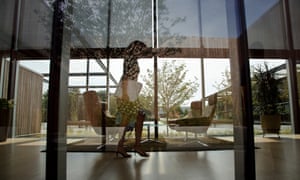
People working in green buildings think better in the office and sleep better when they get home, a new study has revealed.
The research indicates that better ventilation, lighting and heat control improves workers’ performance and could boost their productivity by thousands of dollars a year. It also suggests that more subjective aspects, such as beautiful design, may make workers happier and more productive.
An increasing number of green buildings are being constructed by developers as the cost and health benefits become better known, but this the first study to show such buildings can make their occupants brainier.
The research analysed workers in certified green buildings in five US cities and compared them with other workers in the same cities employed in different offices owned by the same companies.
“We saw higher cognitive function scores for workers in green certified buildings, compared to their counterparts in buildings that were still high performing, but which had not achieved green certification,” said Joseph Allen, at the Harvard TH Chan School of Public Health in the US.
The workers in the green buildings scored over 25% higher in a standard test which uses a Sims-like computer game to assess the ability to think and plan. “The tool assesses complex decision-making performance, which mimics the real-world decision making that all of us encounter every day in our normal work routine,” said Allen.
The quality of sleep of the workers was also assessed using special watches with sensors that measured the length of sleep, tossing and turning and interruptions. Those in green offices had 6% higher sleep scores, said Allen: “I think this is one of the most provocative findings in the study - it suggests that buildings impact us after the eight hours we are in there for our work day.”
Furthermore, the green building workers reported 30% fewer “sick building syndrome” symptoms, such as headaches and eye and respiratory irritation. Increased energy efficiency of buildings has raised concerns about the impact of poorer ventilation, although modern technology enables heat to be retained while air is kept fresh.
The green buildings had better ventilation and therefore lower levels of carbon dioxide and chemicals called volatile organic compounds (VOCs) that are emitted by furniture and carpets. Previous research by the Harvard group in controlled lab conditions showed this significantly boosts cognitive scores and could increase the productivity of each worker by thousands of dollars a year for investments of just tens of dollars per worker.
The green buildings were also better lit, with more daylight, which research has shown can help strengthen people’s daily rhythms and promote better sleep.
The cognition and sleep benefits of the green buildings were clear in the research but statistical analysis showed that the physical ventilation, light and heat control factors did not explain all of the improvements.
“We see this additional, building-level effect,” said Allen. “There is absolutely a psychological as well as a physiological impact of being in better buildings and I think they are both critically important.”
Marcella Ucci, an expert at University College London in the UK and not involved in the new research, said: “It is very interesting and useful research. The causes [of the improvements] may need to be investigated further, as they may not be simply what they measured. There are perhaps softer things, like design and even beauty - the “delight factor” - which can’t be measured.”
Ucci noted that the research compared green certified buildings with others that were still of a good standard: “If they had compared with lower quality buildings, the differences might have been even bigger.”
Trillions of dollars have been spent on new buildings in the last five years, about a third of which was spent on green buildings. Allen said the adoption of green buildings was not higher because decisions were not being taken at a high enough level in organisations, meaning the costs to the facilities department were not compared to the economic and health benefits elsewhere in the company.
But he said attitudes were changing: “I am absolutely hopeful. I see a real estate community that is engaged on this topic and starting to understand that they can make decisions around health that are going the impact the bottom line.”
John Mandyck, chief sustainability officer at United Technologies, one the world’s largest providers of building technologies, said: “People had surmised the benefits of green buildings but there hasn’t been good science behind it. Now there is science behind the intuition.” United Technologies helped fund the new study but had no involvement in the research, which is published in the peer-reviewed journal Building and Environment.
Mandyck said that, with the world population growing and urbanising quickly, more green buildings were needed to meet that challenge. Focusing on energy efficiency is important he said, but 90% of the costs associated with a building are people’s salaries, so improving their performance could be an important driver for the adoption of green buildings.
“Our goal is to grow the green building movement and we are a supplier to that market,” he said. “We believe we can do good for both our customers and our investors.”
